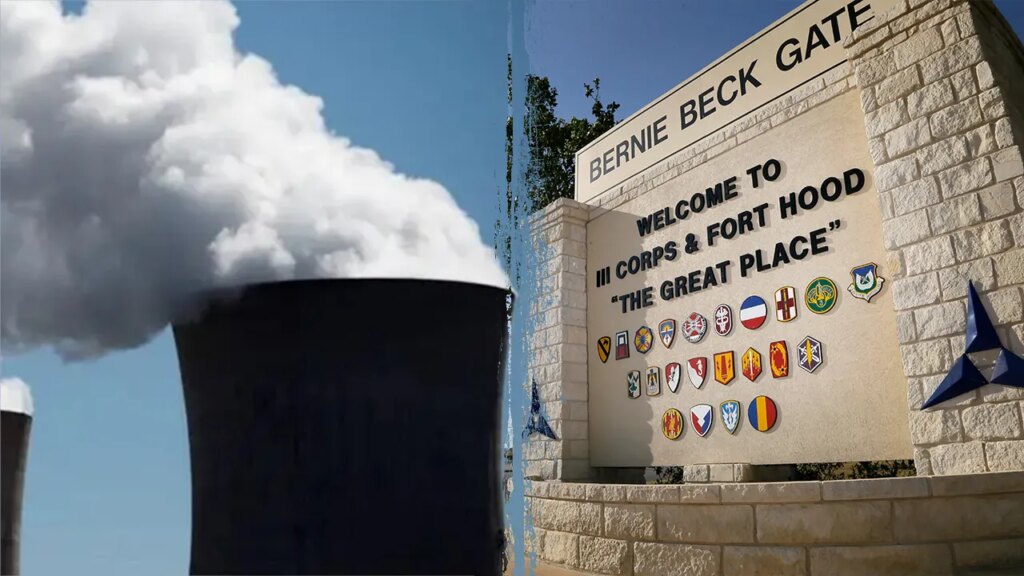NEWYou can now listen to Fox News articles!
The Army is launching a sweeping new nuclear program to generate power for bases across the globe, particularly in remote or contested locations where fuel might be difficult to obtain, Fox News Digital has learned.
“Hundreds of millions” of dollars will be funneled into the program known as the Janus Project over the next five years, according to Dr. Jeff Waksman, the Army official leading the effort, to install next-generation commercial microreactors at military sites.
“Great power conflict is defined by who can move their resources around,” Waksman said. Energy demands are only set to increase as modern warfare trends toward drones, directed-energy weapons and artificial intelligence. And as war planners prepare for a potential battlefront in the Indo-Pacific with China, “our ability to move energy around the oceans has never been more challenged,” he said.
“It is an immense challenge in terms of providing 24/7 power. Military bases right now are powered entirely by fossil fuels. It is not possible with current technology to provide 24/7 power with solar, wind, and batteries,” Waksman said. “So the only solution to the tyranny of fuel that exists now is nuclear power.”
TRUMP MUST TRIPLE SEVERELY OUTDATED NUKE ARSENAL TO OUTPACE CHINA AND RUSSIA, REPORT WARNS
The new plan follows an executive order President Donald Trump signed earlier this year directing the Department of War to begin operating an Army-regulated nuclear reactor at a U.S. military installation by September 2028.
The initiative — known as the Janus Program — will be led by the Department of the Army, designated as the executive agent for the mission. Waksman described Janus as a “real hardware program” aimed at delivering tangible energy capacity rather than a policy concept. “There have been a lot of nuclear projects in the past that peaked at the press release,” he said. “That is not what this is.”
Under Janus, the Army will partner with the Defense Innovation Unit and the Department of Energy’s national laboratories to oversee the design and testing of commercial microreactors. The reactors will be commercially built and operated, rather than owned by the military. To encourage private investment, the Army will use a milestone-based contracting model inspired by NASA’s Commercial Orbital Transportation Services (COTS) program — the same framework that helped launch the commercial space industry by funding companies like SpaceX and Boeing to reach key technical milestones instead of paying for traditional government procurement.
The Army hopes this flexible model will accelerate development, lower costs, and spur a self-sustaining market for small reactors that could eventually power both military and civilian infrastructure.
Construction of the first hardware is not expected before 2027, which Waksman called “light speed” for a nuclear program. Early work will focus heavily on materials science and supply chains, which he said remain major bottlenecks.
“In order to provide components that are viable under the conditions of a nuclear reactor, you need certified suppliers — and there just aren’t enough,” he said. “One of our goals is to help consolidate and strengthen the industrial base so multiple companies can use the same qualified suppliers.”
US COULD LOSE NEXT MAJOR WAR DUE TO PENTAGON’S ‘BROKEN’ ACQUISITION SYSTEM

The Army plans to work with multiple vendors, each expected to build at least two reactors — the first serving as a prototype and the second refined through lessons learned.
Beyond powering domestic installations, officials say Janus will also help solve one of the most pressing logistical challenges in a potential conflict with China: moving energy across vast ocean distances. Waksman cited Guam as an example — an island where more than 90 percent of electricity comes from imported oil delivered by foreign-flagged tankers traveling thousands of miles across contested sea lanes.
“Having something that can provide power for years at a time without any resupply would be an absolute game-changer,” he said.
For now, the reactors will remain stateside, but Waksman said the technology is being developed with future expeditionary use and commercial spin-offs in mind.
“The Army doesn’t want to be the only buyer of these reactors,” he said. “If we can get industry to the sixth or seventh unit, where they can sell to commercial partners, then we’ve succeeded.”
CLICK HERE TO DOWNLOAD THE FOX NEWS APP
Nuclear microreactors are smaller, factory-built power systems that use the same basic principles as traditional nuclear plants but at a fraction of the size. Most produce between one and 20 megawatts of electricity — enough to power a small town or a military installation — and can operate for years without refueling.
Unlike large commercial reactors, which can take a decade to construct, microreactors are designed for rapid deployment. They can be shipped by truck or aircraft and installed on-site within weeks, providing steady, carbon-free power in places where fuel delivery is difficult or dangerous.
Read the full article here

